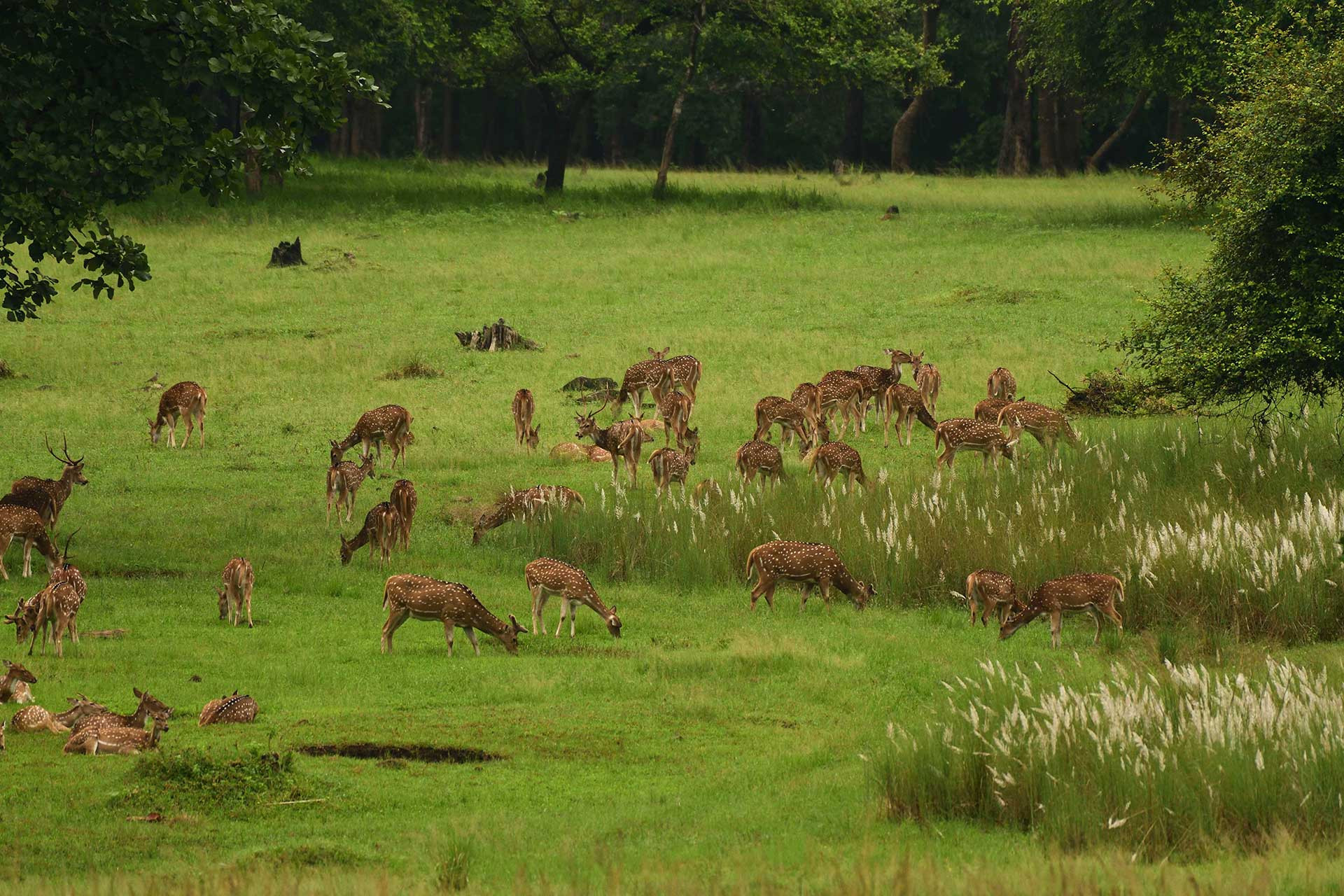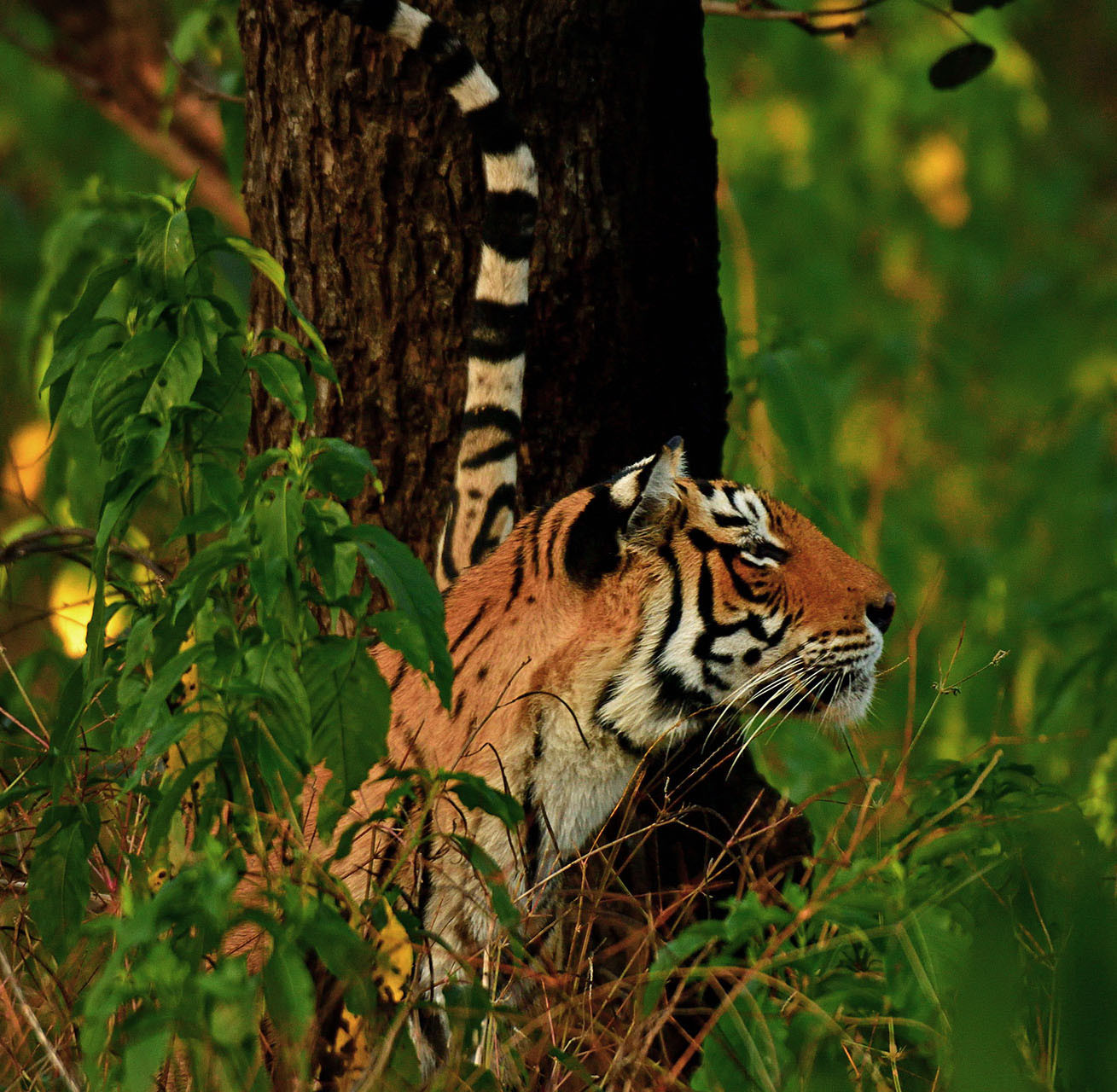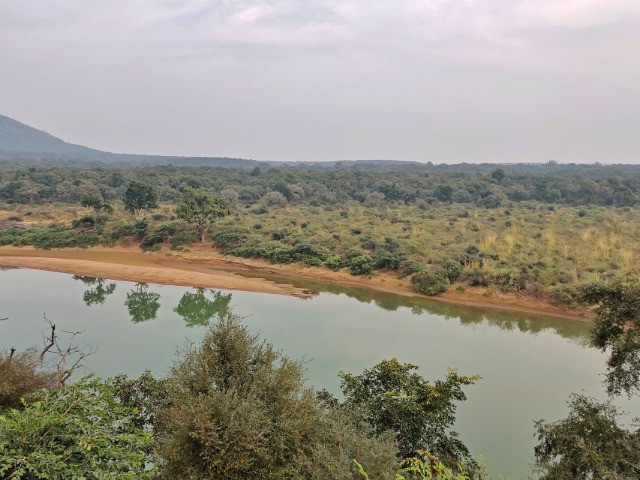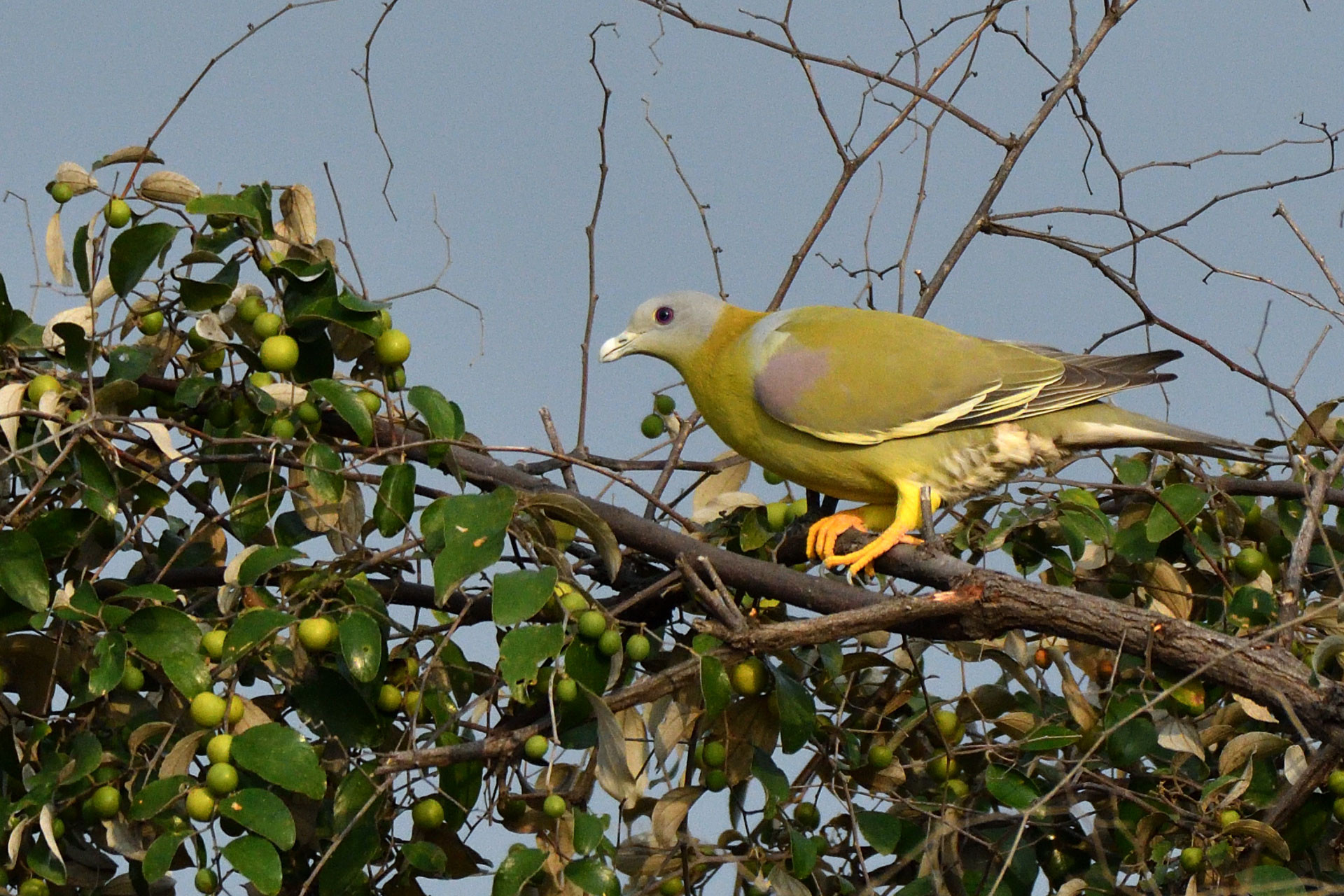The forests of Satpura have a long and decorated history, most beautifully described by the late Shri Bhawani Prasad Mishra in his famous poem Satpuda ke ghane jungle. They even find mention in the 1871 book The Highlands of Central India by Captain James Forsyth.
The high mountains, deep gorges and dense forests of Satpura hold secrets bountiful that one can discover only by venturing further into its unexplored terrain. Located in the Hoshangabad, Betul and Chhindwara districts of Madhya Pradesh, Satpura Tiger Reserve, a part of the Pachmarhi Biosphere Reserve, attracts a large crowd of tourists each year. The reserve was recently included in the probable list for the coveted UNESCO World Heritage site tag.
The topography of the reserve is unique; situated amidst the Satpura mountain ranges, with its western boundary marked by the backwaters of River Tawa and in the north by the backwaters of River Denwa. While navigating these huge reservoirs, one gets the feeling of being lost in the ocean. The high peaks of the Satpura mountain ranges are visible from long distances. These mountains are millions of years old and give the tiger reserve its name. Dhupgarh, the highest peak of Madhya Pradesh (1351m), is located inside the reserve. During the monsoon season, the numerous deep gorges create magnificent waterfalls. Bee Fall and Dutchess Fall are in full force this time of the year. One can see ancient rock paintings at many places inside the reserve, depicting the fauna from those times.
The total area of the tiger reserve is 2133.30sq.km., out of which 1339.26sq.km. is in the core zone. The reserve was notified in 2000 and comprises Bori Sanctuary, Pachmarhi Sanctuary and Satpura National Park. It is home to around 92 species of trees, 52 species of mammals, 300 species of birds, 130 species of butterflies and more than 30 species of reptiles.
This reserve is largely made up of mixed forests with a sizeable proportion of Sal and Teak. These mixed forests consist of tree species like jamun, baheda, palash, mahua, saja, bija, tendu, arjun, semal, salai, kusum, achar, amla, dhaman, lendia, harra and many more. One can find the list of trees found in Central India in the excellent book Jungle Trees of Central India by Pradip Krishen. Bamboo is the dominant species found in the hilly terrain of the reserve. Grasslands also have their share of the terrain. Former villages, evacuated over time, have turned into rich grasslands and attract a variety of herbivores, including large herds of Spotted Deer.
Today, Madhya Pradesh is known as the Tiger State of India, housing the maximum number of tigers in the country. According to the 2018 census, Madhya Pradesh recorded 526 tigers. That said, the presence of these magnificent cats is felt more than seen here at Satpura. One can witness plenty of evidence of the big cat's presence as one travels through the reserve, but sighting one needs a bit of luck as they are yet to adjust to the visiting vehicles and tourists. Although pugmarks and scat and alarm calls of other animals can keep one fully engaged during the safari, there are occasions when the majestic cat obliges its visitors.
Leopards are more easily seen, and there are frequent sightings. Their density is quite high here as the hilly terrain suits them perfectly. Spotted Deer, Sambar, Barking Deer, Chousingha, Indian Gaur, Blue Bull, Jungle Cat, Wild Boar, Indian Jackal, Bengal Fox, Striped Hyena and Rhesus Macaque are the other mammals found in the reserve.
You may also like to read
Once the reserve opens in October after the rains, the hills are resplendent with sightings of large herds of Indian Gaur. The gaur herds shift to the hills in search of food as the lowlands become submerged in water and find it in abundance in the large tracts of bamboo patches. As the summer season approaches, they return to the green pastures formed by the retreating backwaters. The hills are also perfect for spotting Sloth Bears.
The reserve has a good number of Dholes as well. But a healthy population of Wild Dogs has meant that the herbivore population has suffered quite a lot in some pockets. Dholes are ferocious hunters, and once they lock in on a target, they almost always get their prey. In recent years, I have seen that in the core area near Churna gate, the number of Spotted Deer has decreased from thousands to just a few hundred. I once witnessed a pack of Wild Dogs hunt down a Spotted Deer and clean it down to its bones in a matter of minutes. Dholes perform an important ecological function in balancing the herbivore concentration in a region.
To increase the distribution and population of Barasingha or Hard-ground Swamp Deer, the state animal of Madhya Pradesh, a herd was relocated here from Kanha Tiger Reserve in 2015. The Barasingha population has since flourished in Satpura.
The Indian Giant Squirrel is seen in many parts of the reserve. If lucky, one might even see the rare Indian Giant Flying Squirrel. The Eurasian Otter, which is considered to be one of the rarest mammals found in India, has also been reported from Satpura. Reptile species found here include crocodiles, monitor lizards and snakes such as the Indian Rock Python. The endemic Satpura Leopard Gecko is also seen here. Named after the Satpura mountain ranges, the gecko is only found in the central Indian states of Madhya Pradesh, Maharashtra and Chhattisgarh. Many species of amphibians are also seen here.
Satpura Tiger Reserve is a treasure trove for birdwatchers. The avian diversity is high, with more than 300 bird species recorded. The endangered Black-bellied Tern is known to breed here. The Indian Skimmer, another endangered species, is seen here, although in small numbers. The critically endangered Indian Long-billed Vulture finds safe refuge in the cliffs of the high Satpura mountain ranges. They are seen in good numbers inside the park. Both Grey and Red Junglefowl distribution has been recorded. Satpura is also home to threatened birds of prey such as the Grey-headed Fish-Eagle.
In many places, the beautiful Racket-tailed Drongo is seen moving around within mixed hunting parties. The Malabar Pied Hornbill is seen higher up in the canopies of the large trees within the abundant mixed forests. If you are lucky enough you can see large flocks of them on fruiting trees. The Indian Spotted Creeper is found here. During the winter season, large flocks of Yellow-footed Green-Pigeons can be seen basking on bare trees in the early morning hours. Black-capped Kingfisher, Black-crested Bulbul and Blue-bearded Bee-eater are the other star attractions that rank high on every birdwatcher’s list. Large numbers of migrant Bar-headed Geese, the world’s highest-flying bird species, can be seen thronging its backwaters. They are accompanied by other species of migratory ducks such as the Eurasian Wigeon, Northern Pintail and Northern Shoveler.
The large tracts of forests falling under the Satpura Tiger Reserve form the backbone of River Narmada. The river is fed by the watershed created by these forests. The Narmada River is a lifeline for all major cities across Madhya Pradesh. In that respect, these forests that feed the Narmada hold far greater value than just its immediate ecosystem.
The local people around the tiger reserve belong to the Gond, Bharia and Korku tribes. The management of the reserve has taken care to tend to the livelihoods of these indigenous communities. Many of them are employed as forest guides and guards, and other establishments near the reserve provide employment to the youth from these villages.
There are five gates to the reserve: Madai, Sahera/Jamanidev, Dhasai/Churna, Parsapani and Neemghan. Both the core and buffer areas are rich in flora and fauna. These zones have been managed prudently and provide excellent mammal sightings to tourists. I would like to mention that buffer zones like Parsapani, Bineka and Jamanidev are perfect for sighting wildlife, as the core areas get overcrowded most of the time. One can even enjoy the thrill of night safaris in the buffer zones of the reserve. The nocturnal and shy Rusty-spotted Cat, the smallest wild cat in the world, is a favourite among tourists. Owls, nightjars, civets and other nocturnal wildlife are also seen during night safaris. Apart from jeep safaris, activities such as walks in the forest and boat rides are permitted at the reserve.
The Satpura Tiger Reserve has already become a preferred wildlife destination in Central India and attracts thousands of tourists every year. The presence of the majestic Royal Bengal Tiger has ensured the existence of numerous other smaller life forms, and all of them are peacefully thriving here today.














